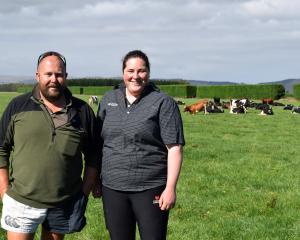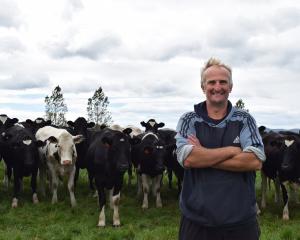
Hamilton Farms contract milker Hamish Dempsey runs 1000 cows on 300ha in Winton.
The second and final round of his artificial breeding programme finishes on December 15.
"I enjoy this part of the season."
During the mating season, a farmer needed to be able to consistently recognise the signs of a cow in heat.
"You need to pay attention and look at every cow because some can present with some signs and not others."
He identified cows on heat and drafted them off for mating.
The morning after, 24 hours after mating, tail paint and a breeding indicator sticker were applied to ensure the same cows did not get drafted off again the next day.
"If you draft out anything that has been ridden, you are going to be inseminating a cow twice within 24 hours."
The cost of a missed pregnancy had a big financial impact but wasted semen also added up quickly, he said.
An important part of ensuring a successful mating was ensuring the cows had been given the necessary feed and trace elements to be "cycling strong" during the breeding season.
CRV national sales manager and veterinarian Julia Baynes said getting heat detection right was the linchpin of reproductive success and crucial for protecting bottom lines.
"Getting cows in-calf quickly can significantly impact a farmer’s profitability while simplifying farm management.
"Cow fertility is the cornerstone of every dairy farm business, so it’s imperative dairy farmers have a comprehensive heat detection plan in place. Even if your mating is already under way, there are steps you can take now to ensure it continues to go smoothly.”
Effectively identifying cows on heat was more than a casual observation, Dr Baynes said.
"It requires a well-thought-out plan. This includes recording heats, assigning responsibilities, selecting detection aids and establishing a schedule."
Achieving earlier calving had its rewards, she said.
"It results in quicker recovery, cycling and more opportunities for conception, ultimately leading to improved overall reproductive performance.
"Reproduction is a year-round focus, not just limited to the key 12-week mating period. A season presents only one opportunity to achieve desired results."
Missing a heat could cost more than $250.
"Farmers could do without that extra cost right now.”
The timing of insemination was crucial.
"To reach a 78% 6 week in-calf rate, farmers should submit 90% of cows by week three of mating, significantly higher than the national average of 80%. Missed heats are a leading cause of lower-than-target submission rates,” she said.
Farmers needed to recognise the signs of active heat, which included standing to be mounted, cows riding other cows, riding marks or clear discharge, mud on flanks/saliva on the back, disrupted cow flow, activated heat detection aid or tail paint rubbed, swollen red vulvas, change of behaviour at milking and sexually active groups.
"Best practice is to use a combination of observation of signs and heat detection aids. It’s important they are placed correctly on the cow for optimal results.”
Farmers needed a comprehensive heat detection plan.
"One team member should be in charge of heat detection. Make sure calving dates are entered into a herd recording system, ear tags and collars are clean and functioning, drafting gates are operational and heat detection aids are applied correctly and regularly.
Effective heat detection was the key to achieving better submission and conception rates, ultimately leading to improved in-calf rates, she said.














